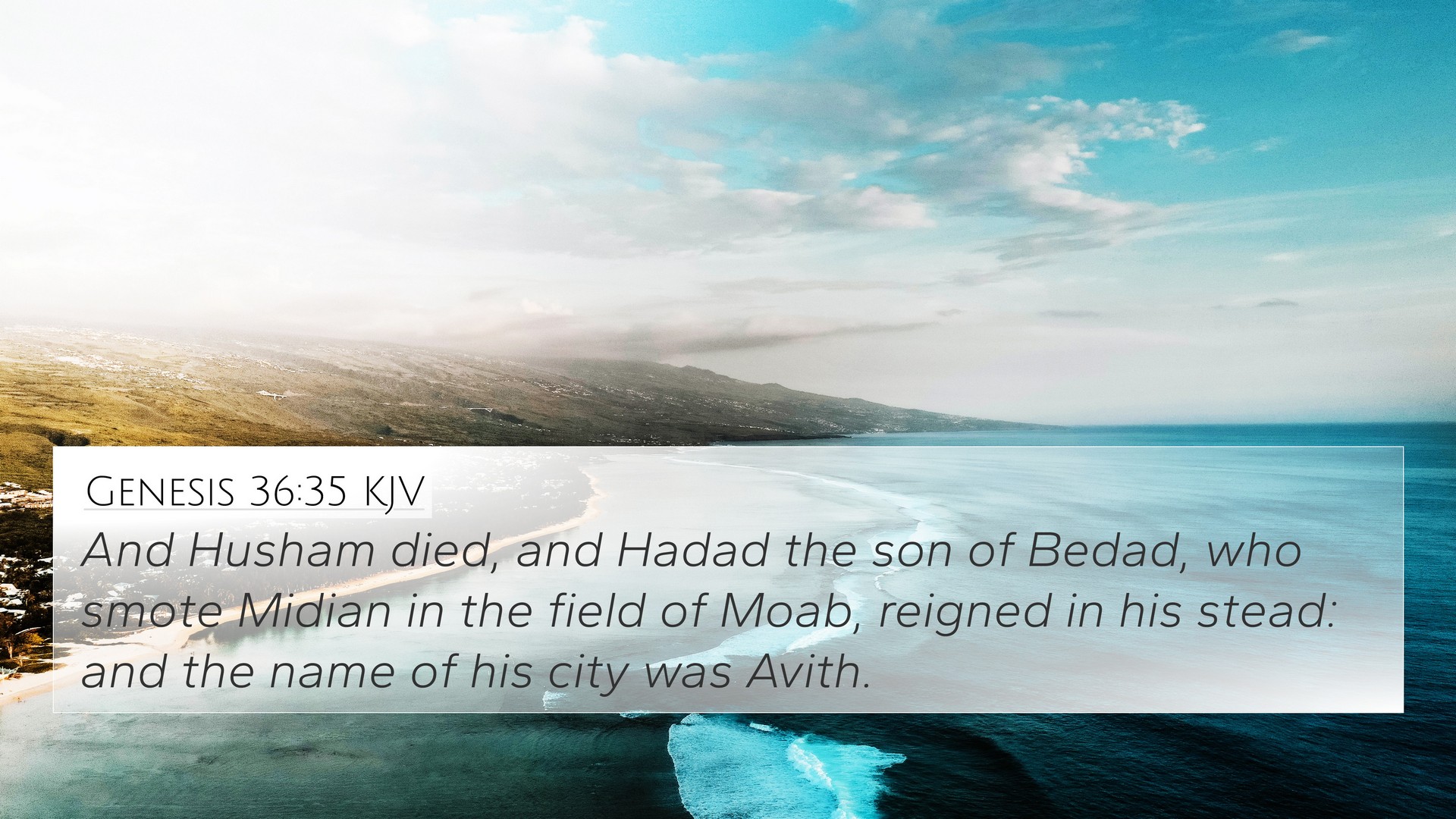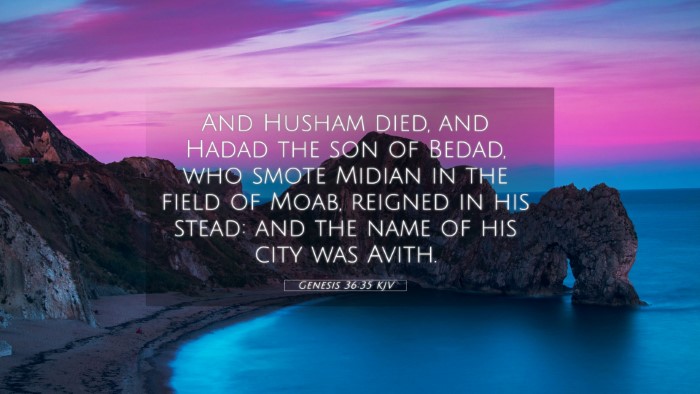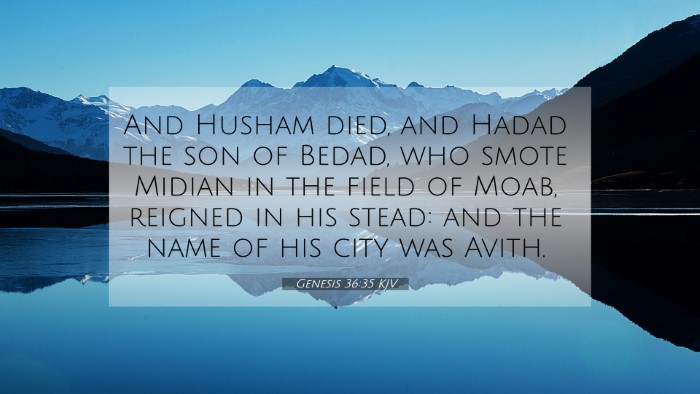Understanding Genesis 36:35
Bible Verse: Genesis 36:35 states, "And when Jobab died, Hadad the son of Bedad, who smote Midian in the field of Moab, reigned in his stead: and the name of his city was Avith." This verse is part of the genealogical record of Esau and highlights the succession of kings in Edom.
Summary of Meaning
This verse emphasizes the historical lineage of Edomite kings and reflects the broader theme of God's sovereignty in establishing authorities. The mention of Hadad as a conqueror signifies the interconnectedness of regional powers, particularly concerning Israel and its neighbors.
Commentary Insights
- Matthew Henry: Henry points out that this verse illustrates the continuation of Edomite kings, reflecting on how God used these figures to fulfill His plan. The lineage shows God's providential rule over nations, whether they be His chosen people or others.
- Albert Barnes: Barnes highlights the significance of Jobab and Hadad, noting that their reigns were marked by important military victories. The connection to Midian suggests a notable conflict and reinforces the idea that even rival nations serve a purpose in God's overarching narrative.
- Adam Clarke: Clarke underscores the spiritual lessons from this genealogical mention, interpreting it as a call for readers to recognize God's hand in history. He elaborates on the prominence of Edom and its interactions with Israel as vital for understanding subsequent Biblical events.
Cross-References and Connections
Genesis 36:35 is interconnected with several other scriptures that enhance its meaning through links and parallels:
- Genesis 25:30: This verse links to the development of Esau's lineage.
- Genesis 14:7: It highlights the geography and tribes involved in the region at the time.
- 1 Chronicles 1:50: Chronicler's account of the Edomite kings reiterates the historical significance of this verse.
- Deuteronomy 2:5: This verse outlines the relationship between Israel and Edom, further contextualizing Hadad's reign.
- Numbers 24:18: A prophetic mention of Edom shows its fate as part of God's plan.
- Obadiah 1:18: A prophecy concerning Edom denotes the struggles faced by the nation.
- Isaiah 34:5: Illustrates judgment against Edom, providing further historical context.
Thematic Connections
Genesis 36:35 connects with broader themes in scripture including:
- Divine Sovereignty: God's authority over nations and kingdoms.
- The Nature of Leadership: Insights into leadership roles during transitional periods in history.
- Legacy and Heritage: The impact of lineage on identity and historical context.
- Conflict and Resolution: Nations interacting through warfare, reflecting God's control over such events.
Tools for Cross-Referencing
To study scriptures effectively, consider utilizing resources such as:
- Bible concordance for thematic studies.
- Cross-reference systems which help link verses.
- Comprehensive Bible cross-reference materials for in-depth analysis.
Online tools to identify connections between Old and New Testament.
Conclusion
In summary, Genesis 36:35 is not merely a historical note; it serves as a reminder of God's unyielding presence throughout history, guiding the destinies of nations. Understanding the significance of this verse through thorough cross-referencing provides deeper insight into the Biblical narrative and the interconnectedness of God's plan.


